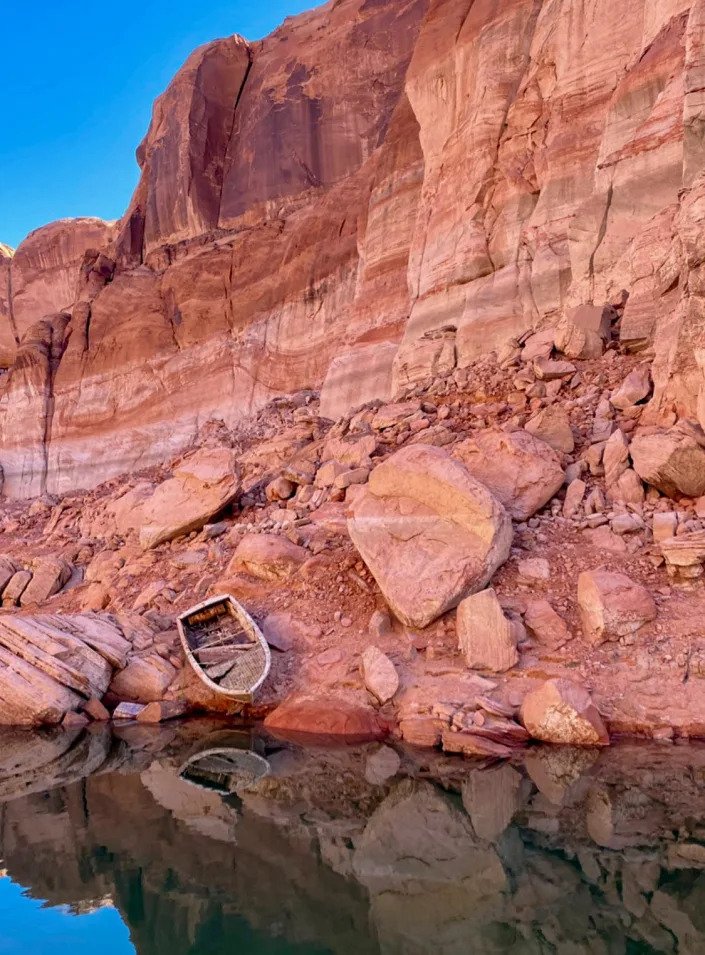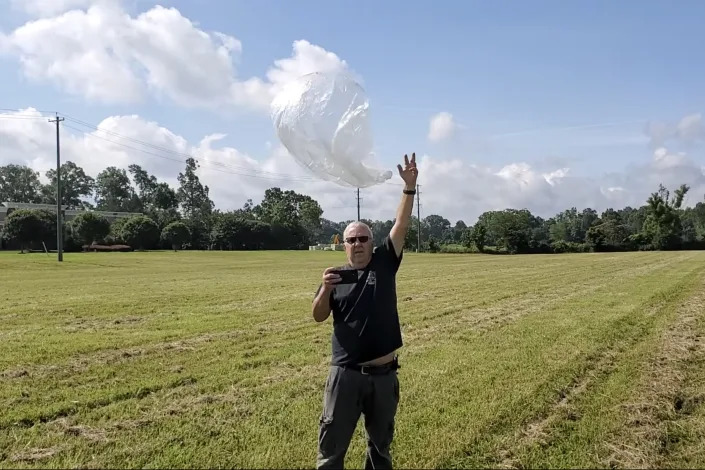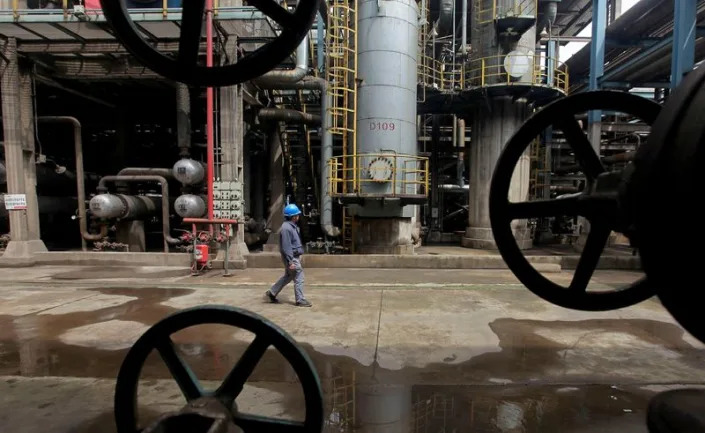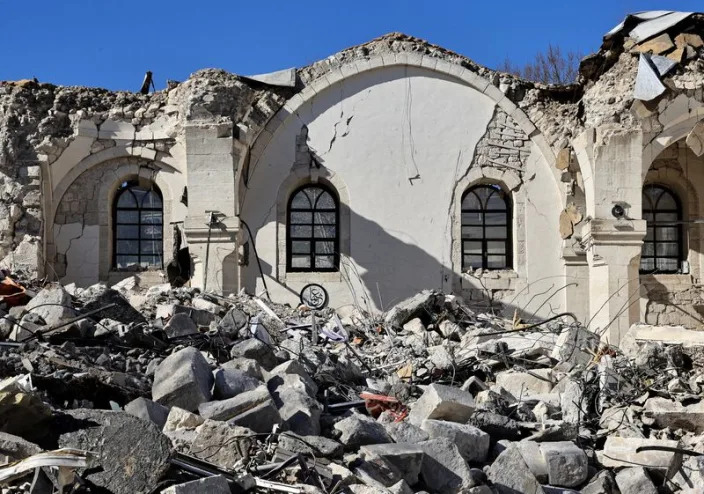Matt Lavietes
Fri, February 17, 2023
A court ruling this week that rejected an Oklahoma woman’s petition of custody over the son she raised for two years with her estranged wife should serve as a cautionary tale for same-sex parents, some legal experts say.
Kris Williams and Rebekah Wilson were legally married in June 2019, before Wilson gave birth to a boy that August, according to court documents. Shortly after the couple separated in November 2021, Wilson moved in with the child’s sperm donor, taking the boy with her and prompting Williams to petition for custody.
If Williams were a man, there would have been a “presumption of paternity” under Oklahoma state law, which says: “A man is presumed to be the father of a child if … He and the mother of the child are married to each other and the child is born during the marriage.”

Kris Williams, right, and Rebekah Wilson with their son. (Courtesy Kris Williams)
But a judge on Monday ruled against Williams, stating in her decision that the law does not apply to parents in same-sex relationships, because the state parentage law predates the legalization of same-sex marriage in the state.
The ruling surprised some legal experts, who noted the decision is an outlier when compared to similar cases across the country, and caused them to advise same-sex couples to take extra steps to ensure their parental rights.
“It’s a reminder for same-sex couples that we do continue to live in a legal system and a society that is not always fair and doesn’t always follow the law,” Shannon Minter, an attorney with the National Center for Lesbian Rights, said. “Those couples may face unfair and even unlawful obstacles to having their parental rights secured and protected, and that’s just a reality.”
The Supreme Court’s landmark 2015 decision that legalized same-sex marriage nationwide, Obergefell v. Hodges, found that same-sex couples are entitled to “civil marriage on the same terms and conditions as opposite-sex couples.” Some legal experts, like Minter, argue that this decision alone should be enough to guarantee gay married couples the same parental rights as their straight counterparts.
Two years later, in June 2017, the high court ruled in Pavan v. Smith that states must extend equal treatment to same-sex parents, mandating the issuance of two-parent birth certificates for children born to same-sex spouses to recognize parentage.
Wilson was initially listed on the child’s birth certificate when he was born in 2019, according to court documents. However, Oklahoma County District Judge Lynne McGuire argued that Williams could not claim parentage rights over the child because Oklahoma’s parentage act predates the legalization of same-sex marriage in the state.
“[The act] does not take into account same-sex marriage, and there is no presumption that the wife of the mother is automatically presumed the parent of a child born during the marriage,” McGuire ruled.
Douglas NeJaime, a professor of family law at Yale Law School, disagrees with McGuire’s ruling. He argued that even if states have gender-specific parentage rules that were drafted in a time when same-sex couples could not marry, the Supreme Court’s Obergefell and Pavan decisions mandate that state law applies to married same-sex couples.
“It’s not like you’re looking at two statutes,” NeJaime said, referring to the comparison of the state’s parental act and the Supreme Court decisions. “You’re looking at a statute and a constitutional precedent that now tells you, ‘You have to apply that statute consistent with this constitutional precedent.’”
In the Monday ruling, McGuire wrote that the only way Williams could have claimed parentage legally was if she had adopted the child she was raising.
“The reality is that the law provides a legal remedy available to Williams,” McGuire wrote, referring to adoption. “She knowingly chose not to pursue it.”
Williams, 51, vowed to appeal the judge’s decision and expressed dismay that her sexuality played a role in her rights as a parent.
“As a queer person, being invisible, being erased is one of those traumas we have,” she said, at times choking up. “So on that level, going through this as a queer person, it’s a recurring trauma of being erased: ‘You’re not important, go away.’”
Williams said she and Wilson started dating in June 2014. The pair began looking for sperm donors to have a child in 2018, she added, finding Harlan Vaughn through the website Known Donor Registry, and connecting with him on Facebook. In September 2018, according to court documents, Wilson entered a “Known Sperm Donor Agreement” with Vaughn before the nonmedical insemination of Wilson took place in December of that year.
The pair chose Vaughn to be their sperm donor because they believed he was gay, and he had a boyfriend at the time, Williams said. She said she had hoped Vaughn could have a “guncle” (gay uncle) relationship with the child.
“I felt extremely safe,” Williams said. “I couldn’t have guessed in a million years that it would be two people in our community that were going to take these steps, and especially one that I very much was in love with.”
In October 2021, not long after the child’s second birthday, Vaughn moved to Oklahoma City and began spending time with the boy, according to court documents. The following month, Wilson left the couple’s shared home, taking their son, and moved in with Vaughn. Wilson and Vaughn have been raising the boy together and have since had a second biological child, court documents show. Williams has not seen the boy, now 3, since November 2021.
Vaughn declined an interview request from NBC News but issued a statement on behalf of himself and Wilson: “We remain focused exclusively on our child’s protection and well-being. We are grateful for the court’s validation.”
Minter and NeJaime said that most custody cases involving the children of estranged same-sex spouses or those who have already divorced have ended with the nonbiological parent maintaining their parental rights, with the exception of the Oklahoma ruling and an Idaho case, Gatsby v. Gatsby, in 2021.
However, they said that with the Supreme Court’s conservative majority and the surge of anti-LGBTQ state legislation being introduced across the country this year, same-sex parents should do whatever they can to protect themselves. When possible, they both suggested, nonbiological same-sex parents should adopt their own children or apply for a judgment from a court to ensure their legal rights as parents.
“It should not be necessary, and it’s a shame, but it is a reality in many places,” Minter said.
This article was originally published on NBCNews.com
















